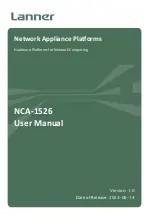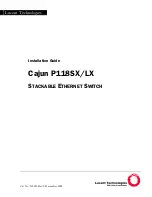
Chapter 2 - Basic Configuration Guide
6
Configuring the Server for IP and IPX Client Tunnels
To configure the IntraPort Carrier for IP and IPX client tunnels, each user must be entered into
the VPN user database (or into a RADIUS server database) and assigned a tunnel configura-
tion.
Required for Client Tunnel Configurations
These are the basic parameters for a tunnel configuration:
•
Name of configuration
•
Bind To port
•
Local IP Net and/or Local IPX Network
•
Reachable IP networks
•
VPN Group DLCI
CV: Use the VPN Group Configuration Dialog Box to create and name a tunnel configura-
tion. Use the General tab to set the Bind To port. Use the IP Connection tab to set the
Local IP Net and add IP network numbers and masks which will be reachable via the
tunnel configuration. Use the IPX Connection tab to set the Local IPX Network. The
VPN Group DLCI can only be set via text-based configuration.
TB: Use
the
configure command and create and name a VPN Group Name section. Then
set the BindTo, LocalIPNet, IPNet and/or LocalIPXNet, and VPNGroupDLCI
keywords in that section.
Suggested for Client Tunnel Configurations
You may want to add or change protection suites, set up filters for the tunnel, set a backup
device, etc.
CV: Use the IKE Configuration, IPX Filters, IP Filters and/or Rollover tabs in the VPN
Group Configuration Dialog Box.
TB: Use
the
configure command and set keywords in the VPN Group Name section.
VPN User Database
If you are using a RADIUS server for user authentication, you will need to set up VPN users
on that server. If not, then you must enter each user into the VPN user database.
CV: Use the VPN User Dialog Box.
TB: Use
the
edit config command and set parameters in the VPN Users section.































